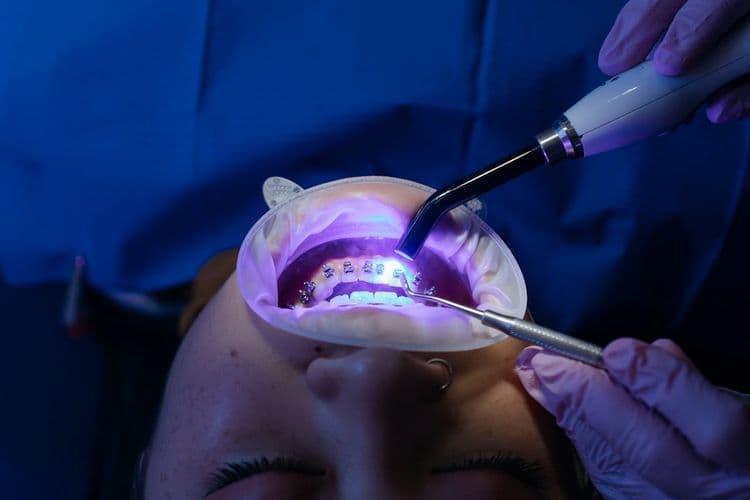Dental aesthetics, an intriguing facet of dentistry, focuses on enhancing not only the appearance of teeth and gums but also promotes overall oral health. This multidimensional field encompasses procedures ranging from teeth whitening to orthodontics, each with its unique attributes aimed at improving tooth color, alignment, and shape. While the aesthetic appeal is certainly significant, the implications of dental aesthetics extend further, potentially boosting self-confidence and simplifying oral hygiene routines. Could this intricate blend of cosmetic and health benefits be the key to a better quality of life and improved social interactions?
Understanding Dental Aesthetics
While many may perceive dental aesthetics as merely concerned with the superficial appearance of one’s smile, it is in fact a complex field dedicated to the thorough evaluation, diagnosis, prevention, and treatment of diseases or conditions that affect the teeth and surrounding structures. This particular area of dentistry, often referred to as cosmetic dentistry, endeavors to enhance an individual’s smile while simultaneously promoting ideal oral health. Cosmetic dentistry, in turn, encompasses a range of procedures, such as teeth whitening, orthodontics, and veneers, all of which contribute to smile design. Smile design involves a systematic approach to improving the overall appearance of one’s smile, taking into consideration factors such as tooth color, shape, and size, as well as gum line and facial structure.
Importance of Dental Aesthetics
Undeniably, dental aesthetics plays a pivotal role not only in one’s appearance but also in their overall well-being and self-esteem. It is an integral part of the dental trends and aesthetic innovations that are transforming the world of dentistry. Here are four key reasons why dental aesthetics is important:
- Enhances Appearance: It improves the color, position, shape, size, alignment of teeth, and overall smile appearance.
- Boosts Confidence: Aesthetically pleasing teeth can enhance self-esteem, making individuals more confident.
- Promotes Oral Health: Perfectly aligned teeth are easier to clean, reducing the risk of oral diseases.
- Improves Functionality: Dental aesthetics can correct bite issues, improving eating and speech.
In essence, dental aesthetics goes beyond vanity, contributing considerably to health and quality of life.
Popular Dental Aesthetic Procedures
Given the growing emphasis on dental aesthetics, numerous cosmetic procedures have emerged to meet the diverse needs of patients. These range from simple treatments to extensive smile makeovers. Cosmetic bonding, for instance, is a popular procedure where tooth-coloured resin is applied to a tooth to improve its appearance. This method is effective for fixing discoloured, chipped, or unevenly spaced teeth. On the other hand, a smile makeover involves a thorough plan of cosmetic procedures to enhance the overall aesthetics of one’s smile. It may include veneers, teeth whitening, and gum contouring among others. These procedures, tailored to individual patient needs, not only improve the look of teeth but also boost self-esteem and quality of life.
The Role of Orthodontics
Orthodontics, a specialized branch of dentistry, plays a critical role in dental aesthetics. It focuses on correcting teeth and jaw alignment to achieve an ideal smile.
- Braces technology: The traditional means of rectifying dental malocclusions has seen significant advancements, offering comfortable and aesthetically pleasing options like ceramic and clear braces.
- Aligner options: Clear aligners are an alternative to braces. They are virtually invisible and can be removed for eating and cleaning.
- Customization: Orthodontics allows treatments to be tailored to individual needs, considering factors like age, oral health, and aesthetic preferences.
- Long-term results: Orthodontic treatments not only improve dental aesthetics but also contribute to better oral health, preventing problems like gum diseases and tooth decay in the long run.
Spotlight on Dental Veneers
Moving from orthodontics, our focus now shifts to an equally significant aspect of dental aesthetics: dental veneers. A broad comprehension of this topic, from understanding what dental veneers are to acknowledging their benefits, is instrumental in making informed decisions about aesthetic dental procedures. This exploration will equip us with essential knowledge about this transformative dental solution.
Understanding Dental Veneers
What are dental veneers, you might ask? Dental veneers are thin, custom-made shells designed to cover the front surface of your teeth. They are primarily used to improve the appearance of discolored, worn down, chipped, or misaligned teeth. Here’s a brief rundown on understanding dental veneers:
- Veneers Materials: Dental veneers are typically made from porcelain or composite resin. Porcelain veneers are more stain-resistant and mimic the light-reflecting properties of natural teeth better than resin veneers.
- Veneer Application: Dental veneers are bonded to your teeth with a special adhesive, a process that requires precision and expertise.
- Veneer Lifespan: With proper care, veneers can last up to 15 years.
- Veneer Maintenance: Regular brushing, flossing, and dental visits are essential to maintain the longevity and appearance of your veneers.
Benefits of Veneers
While dental veneers are often associated with aesthetic improvements, their benefits extend far beyond mere appearances. Veneers can rectify issues such as discolouration, gaps, chips, and misalignment, thereby contributing to a healthier smile.
From a financial perspective, cost considerations for veneers have become more manageable with the introduction of flexible payment plans and insurance coverage options. These factors make veneers a viable solution for many patients seeking dental improvement.
In terms of veneer maintenance, they are relatively easy to care for. A regular oral hygiene routine, akin to natural teeth care, suffices in most cases. This includes brushing, flossing, and regular dental check-ups. Consequently, veneers not only enhance dental aesthetics but also offer practical and cost-effective solutions for various dental issues.
Teeth Whitening: A Brighter Smile
In pursuit of a brighter smile, teeth whitening stands as one of the most sought-after dental aesthetic services. It involves the use of whitening products to lighten the teeth’s color and remove surface stains. However, it’s important to be aware of potential side effects, such as teeth sensitivity.
Here are some tips to take into account when opting for teeth whitening:
- Choose a reputable brand for whitening products to guarantee safety and effectiveness.
- Consult your dentist before starting any whitening regimen, especially if you have sensitive teeth.
- Follow the product instructions carefully to prevent overuse and increased teeth sensitivity.
- Maintain good oral hygiene after whitening to prolong the effects and prevent staining.
The pursuit of a brighter smile need not compromise oral health.

Benefits of Dental Aesthetics
The benefits of dental aesthetics extend beyond an appealing smile. By prioritizing dental aesthetics, one can concurrently promote oral health, addressing potential issues before they escalate. Additionally, an improved smile can greatly boost one’s self-confidence, substantiating the multifaceted advantages of dental aesthetics.
Enhancing Smile Appearance
Although often overlooked, enhancing smile appearance through dental aesthetics can have profound benefits.
- Smile Design: A customized smile design generates a unique look that complements an individual’s facial features, creating aesthetic harmony.
- Increased Confidence: A well-crafted smile can greatly elevate self-esteem, impacting personal and professional relationships positively.
- Non-verbal Communication: A radiant smile can communicate warmth, friendliness, and approachability, enhancing social interactions.
- Psychological Health: Smile enhancement can lead to improved psychological health, reducing stress and anxiety.
In essence, enhancing smile appearance goes beyond mere vanity. It integrates science and art to create a balanced, appealing look, thereby improving the quality of life. Dental aesthetics is indeed a valuable investment in personal well-being.
Improvement in Oral Health
While many may associate dental aesthetics primarily with the enhancement of physical appearance, it is essential to note that these procedures also offer significant benefits to oral health. For instance, straightening treatments such as braces or aligners not only correct misaligned teeth for a more appealing smile but also enable easier cleaning, thus improving oral hygiene. Similarly, dental implants replace missing teeth, preventing jawbone loss, and maintaining the structural integrity of the face. These procedures, when combined with regular preventive care such as cleanings and check-ups, can help prevent tooth decay and gum diseases. As a result, dental aesthetics is not merely a cosmetic pursuit – it’s a vital aspect of maintaining ideal oral health.
Boosting Self-Confidence
Beyond the undeniable improvement in oral health, dental aesthetics also plays a notable role in boosting self-confidence. A well-maintained, attractive smile can lead to considerable self-image enhancement, bringing about a profound psychological impact.
- Self-expression: A confident smile allows for more open and effective communication, enhancing social interactions.
- Positive self-perception: Improved dental aesthetics often lead to a more positive self-view, boosting overall confidence levels.
- Reduced anxiety: The knowledge that your oral health is good can markedly decrease anxiety related to appearance and health.
- Professional opportunities: A confident smile can create a positive impression in professional situations, potentially opening up new opportunities.
In essence, dental aesthetics is much more than oral health - it’s a key element of your overall well-being.
Choosing a Dental Aesthetic Specialist
How does one navigate the process of selecting a dental aesthetic specialist? The first step involves a thorough consultation process where the potential patient and specialist can discuss treatment options and potential outcomes. This process can also serve as an opportunity to evaluate the specialist’s communication skills, bedside manner, and overall clinic environment.
Next, it’s essential to assess the specialist qualifications. Verify their educational background, professional affiliations, and specialty certifications. Look for a specialist who is board-certified by recognized dental organizations. Additionally, consider their experience in the field of dental aesthetics. A more experienced specialist is likely to deliver satisfying results. Finally, check for reviews or feedback from previous patients to gauge the specialist’s reputation within the community.
Frequently Asked Questions
Does Dental Aesthetics Treatment Have Any Side Effects?
Dental aesthetics treatments may have side effects, varying based on the specific procedure. These can include sensitivity, discomfort, or temporary discoloration. Treatment considerations should include a thorough side effects overview before proceeding.
Are Dental Aesthetics Procedures Covered by Insurance?
Coverage for dental aesthetics procedures varies greatly between insurance providers. Some may cover treatments if they offer restorative benefits alongside aesthetic ones. It is advisable to consult with your specific insurance company for definitive information.
How Long Do the Results of a Dental Aesthetics Procedure Last?
The longevity of dental aesthetics procedures largely depends on factors such as the type of procedure, patient’s oral hygiene, and lifestyle habits. Regular maintenance and adhering to dentist’s advice can prolong the results considerably.
Is There Any Age Limit for Undergoing Dental Aesthetics Treatments?
There’s no definitive age limit for dental aesthetics treatments. However, age considerations play an essential role in determining treatment suitability, with certain procedures not recommended for younger patients due to ongoing dental development.
Are There Any Alternatives to Traditional Dental Aesthetics Procedures?
Yes, alternatives to traditional dental aesthetics procedures exist. Holistic approaches, focusing on overall oral health, and non-invasive options, such as teeth whitening and clear aligners, provide aesthetic improvement without extensive dental work.


